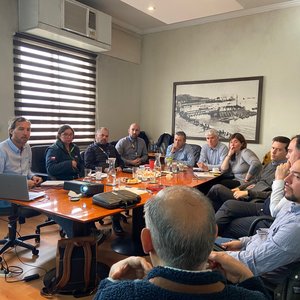In the wake of an attack by Food & Water Watch, the Soy Aquaculture Alliance has issued a press release outlining the benefits of soy in aquafeeds.
"U.S. soybean farmers are well aware of the United Nations projection that global food production will have to rise by 50% by the year 2030 to meet the demands of a growing population. Soybeans are emerging as a critical crop of a healthy and abundant food to feed the world. Soy products provide healthful food in the form of tofu, edamame, soy milk, and other vegetarian options.
Most soybean meal, however, is used in animal feed to create valuable protein, such as poultry, pork and fish. The Soy Aquaculture Alliance, an organization that coordinates research and support for soy use in aquaculture, states that the most efficient use of soy in animal feed is in fish feed, with one to 1.5 lbs. of feed producing one pound of fish. In comparison, it takes up to 1.9 lbs. of feed to produce one pound of poultry and 2.5 lbs. of feed to produce one pound of pork.
Aquaculture presents a huge opportunity to feed the world one of the healthiest foods on the planet - fish and seafood rich in heart-healthy Omega-3s. In 2011, the United Nations' Food and Agriculture Organization reported that, worldwide, more fish for human consumption is being produced by aquaculture than is being wild-caught, and that the wild harvest is unlikely to ever increase again due to over-fishing.
Also in 2011, Conservation International published a study that showed how aquaculture has the least environmental impact than any other means of protein production globally. In the last 10 years, it has been proven that, when done correctly, ocean aquaculture has no significant impact on the ocean environment, while producing high quality, healthful marine fish that are in high demand from chefs and consumers.
Soybean farmers continue to help the aquaculture industry develop environmentally-sound practices, whether fish are farmed in the sea or on land in tanks. The sustainability of global aquaculture depends on renewable and efficient sources of fish feed ingredients, such as U.S. soybeans. Soybean meal and soy oil can replace half to nearly all of the fishmeal and fish oil in feeds for many species, easing pressure on capture fishery resources.
Soybean meal has the best amino acid complex of all of the plant protein ingredients and is highly digestible to most cultured fish and shrimp species. Every fish species has different nutritional requirements, and obviously, there will not be one feed ingredient that meets the needs of all farmed fish. The aim of the soy industry is to provide viable, affordable alternatives to the limited resource of fishmeal and fish oil, which can scale up for a growing aquaculture industry. Continuing research and development of soy-based feeds is yielding very promising results, as well as research in other alternative proteins.
The U.S. soy industry is made up of hundreds of thousands of family farmers who are working land that has been in their families for many generations. Soybean farmers take their stewardship of the land seriously, and have a long history of increasing production while decreasing environmental impacts. Soybeans have always been an environmentally beneficial crop to rotate after harvest of other crops, such as corn, as they fix nitrates in the soil. With advances in biotechnology in the last decade, soybean farmers have been able to greatly increase the environmental sustainability of their farms.
The biggest environmental impact has been the adoption of no-till farming, with herbicide-tolerant crops that allow farmers to completely eliminate plowing on their fields. No-till farming results in better soil health and conservation, improved water retention, decreased soil erosion and decreased herbicide runoff. In fact, no-till farming has led to a global reduction of carbon dioxide, which, in one year, is the equivalent of removing almost seven million cars from the road. Thanks to biotechnology, global pesticide applications have decreased 379 million pounds in the last decade, improving water quality both through less pesticide and herbicide application and less runoff through fields. Studies have shown that this encourages the growth of habitats that support different varieties of wildlife.
U.S. soybean farmers remain committed to environmental stewardship of land resources, conservation of ocean resources, and providing consumers with safe, healthy and abundant food.
To get the facts on soy in aquaculture, visit www.soyaqua.org.










